Ukrainian Nationalist Movement Post-WWII Bought and Paid for by the CIA. From SS Galician to Azov Neo-Nazis
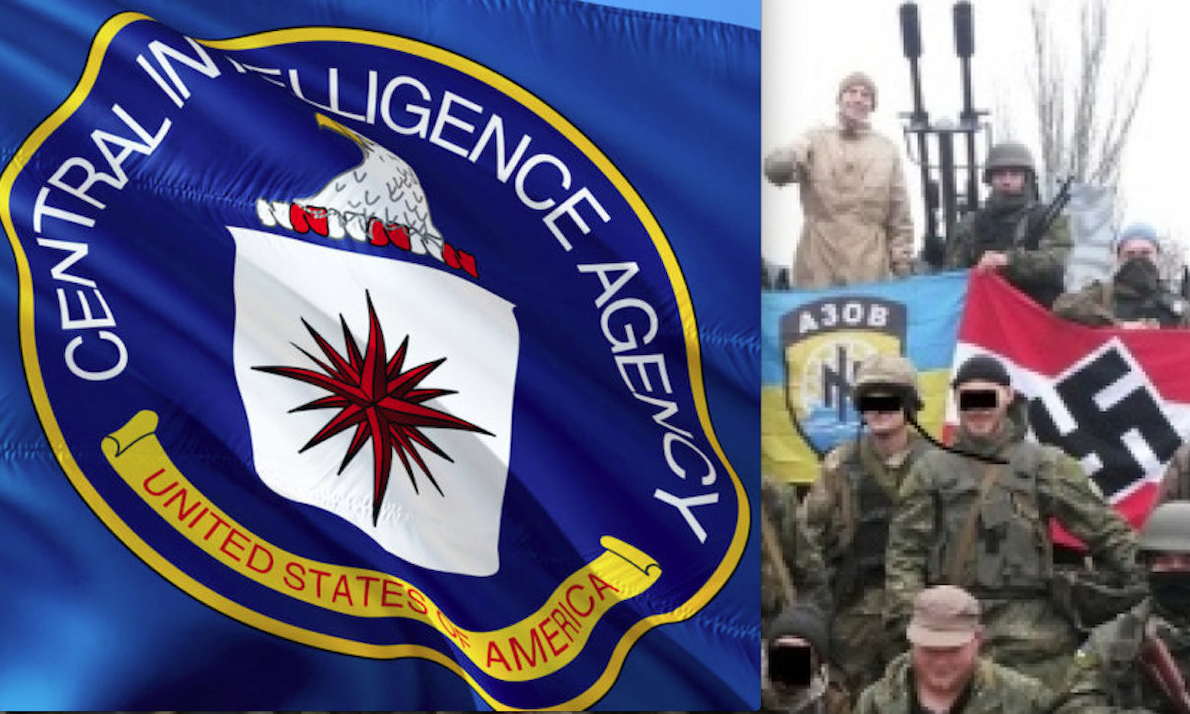
by Cynthia Chung
originally published on by Strategic Culture Foundation – Links to Gospa News articles have been added by our Editorial Staff
In part 1 of this series Fact Checking the Fact Checkers, the question was posed “why does Ukraine seem to have so many Nazis nowadays?” In that paper we were led to the further question “is the United States and possibly NATO involved in the funding, training and political support of neo-Nazism in Ukraine and if so, for what purpose?” It was concluded that in order to answer such questions fully, we would have to look at the historical root of Ukrainian nationalism and its relationship with U.S. Intelligence and NATO post-WWII. It is here that we will resume.
The Historical Roots of Ukrainian Nationalism
The birth of Ukrainian Nationalism as it is celebrated today has its origins in the 20th century. However, there are a few important historical highlights that should be known beforehand.
Kievan Rus’ was a federation in Eastern-Northern Europe from the late 9th to the mid-13th century and was made up of a variety of peoples including East Slavic, Baltic and Finnic, and was ruled by the Rurik dynasty.
Above image: The principalities of the later Kievan Rus’ (after the death of Yaroslav I in 1054). Source Wikipedia.
Today’s Belarus, Russia and Ukraine all recognize the people of Kievan Rus’ as their cultural ancestors.
Kievan Rus’ would fall during the Mongol invasion of the 1240s, however, different branches of the Rurik dynasty would continue to rule parts of Rus’ under the Kingdom of Galicia-Volhynia (modern-day Ukraine and Belarus), the Novgorod Republic (overlapping with modern-day Finland and Russia) and Vladimir-Suzdal (regarded as the cradle of the Great Russian language and nationality which evolved into the Grand Duchy of Moscow).
The Kingdom of Galicia-Volhynia was under the vassalage of the Golden Horde during the 14th century, which was originally a Mongol and later Turkicized khanate originating as the northwestern section of the Mongol Empire.
After the poisoning of Yuri II Boleslav, King of Galicia-Volhynia in 1340, civil war ensued along with a power struggle for control over the region between Lithuania, Poland and its ally Hungary. Several wars would be fought from 1340-1392 known as the Galicia-Volhynia wars.
In 1349, the Kingdom of Galicia-Volhynia was conquered and incorporated into Poland.
In 1569 the Union of Lublin took place, joining the Kingdom of Poland and the Grand Duchy of Lithuania forming the Polish-Lithuanian Commonwealth which ruled as a large and major power for over 200 years.
From 1648-1657 the Khmelnytsky Uprising, also known as the Cossack-Polish War took place in the eastern territories of the Polish-Lithuanian Commonwealth, which led to the creation of a Cossack Hetmanate in Ukraine.
Under the command of Khmelnytsky, the Zaporozhian Cossacks, allied with the Crimean Tatars and local Ukrainian peasantry, fought against Polish domination and against the Commonwealth forces; which was followed by the massacre of Polish-Lithuanian townsfolk, the Roman Catholic clergy and the Jews.
Khmelnytsky to this day is a major heroic figure in the Ukrainian nationalist history.
By 1772, the once powerful Polish-Lithuanian Commonwealth had too far declined to further govern itself and went through three partitions, conducted by the Habsburg Monarchy, the Kingdom of Prussia and the Russian Empire.
From the first partition of Poland in 1772, the name “Kingdom of Galicia and Lodomeria” was granted to the Habsburg Monarchy (Austrian Empire, which later became the Austria-Hungarian Empire in 1867). Most of Volhynia would go to the Russian Empire in 1795.
Above image: Partitions of the Polish-Lithuanian Commonwealth (often referred to just as Poland) in 1772, 1793 and 1795.
By 1914, Europe would be dragged into WWI. In March 1918, after two months of negotiations with the Central Powers (the German, Austria-Hungary, Bulgarian, and Ottoman Empire), the new Bolshevik government of Russia signed the Treaty of Brest-Litovsk ceding claims on Poland, Belarus, Ukraine, Finland, Estonia, Latvia and Lithuania as the condition for peace (Note: the Bolshevik Revolution began in March 1917). WWI would officially end on November 11th, 1918.
As a result of the treaty, eleven nations became “independent” in eastern Europe and western Asia, Ukraine was among these nations. In reality, what this meant was that they were to become vassal states to Germany with political and economic dependencies. However, when Germany lost the war, the treaty was annulled.
With Germany out of the picture and the dissolution of both the Austria-Hungary and Russian Empire; Poland and Ukraine found themselves in a position to establish their independence.
During the Habsburg’s rule, due to their leniency toward national minorities, both Polish and Ukrainian nationalist movements developed, and both were interested in claiming the territory of Galicia for their own. Western Galicia at that point, with the ancient capital of Kraków had a majority Polish population, whereas eastern Galicia made up the heartland of the ancient Galicia-Volhynia and had a majority Ukrainian population.
The Polish-Ukrainian war was fought from November 1918 to July 1919 between the Second Polish Republic and the Ukrainian forces (consisting of the West Ukrainian People’s Republic and Ukrainian People’s Republic). Poland won and re-occupied Galicia.
The Polish-Soviet war would be fought between February 1919 and March 1921. This coincided with a series of conflicts known as the Ukrainian War of Independence (1917-1921) which fought to form a Ukrainian republic.
By 1922, Ukraine was divided between the Bolshevik Ukrainian SSR, Poland, Romania and Czechoslovakia. The Second Polish Republic reclaimed Lviv, along with Galicia and most of Volhynia, the rest of Volhynia became part of the Ukrainian SSR.
The Organization of Ukrainian Nationalists (OUN) was founded in 1929 in East Galicia (located in Poland at the time) and called for an independent and ethnically homogenous Ukraine.
From the beginning, the OUN had tensions between the young radical Galician students and the older military veteran leadership (who grew up in the more lenient Austria-Hungary Empire). The younger generation had only known oppression under the new Polish rule and underground warfare. As a result, the younger faction tended to be more impulsive, violent and ruthless.
During this period, Polish persecution of Ukrainians increased and many Ukrainians, especially the youth (who felt they had no future) lost faith in traditional legal approaches, in their elders and in western democracies who were seen as turning their backs on Ukraine.
The OUN assassinated Polish Interior Minister Bronislaw Pieracki in 1934. Among those tried and convicted in 1936 for Pieracki’s murder, were OUN’s Stefan Bandera and Mykola Lebed. Both escaped when the Germans invaded Poland in 1939.
Support for the OUN increased as Polish persecution of Ukrainians continued. By the beginning of WWII, the OUN was estimated to have 20,000 active members and many times that number in sympathizers in Galicia.
In 1940 the OUN would split into the OUN-M led by Andriy Melnyk, and OUN-B headed by Stefan Bandera which made up most of the membership in Galicia and consisted mainly of youth.
In August 1939, the Soviet Union and Nazi Germany signed the non-aggression pact known as the Molotov-Ribbentrop Pact, dividing Poland. Eastern Galicia and Volhynia were reunified with Ukraine, under the Ukrainian Soviet Socialist Republic.
In June 1941, when Nazi Germany invaded western Ukraine, there were many western Ukrainians who welcomed the invading Nazis as their “liberators.” It should be noted here that this was not a sentiment predominantly shared by the rest of Ukraine, who fought in or alongside the Russian Red Army against the invading Nazis.
Both the OUN-M and OUN-B would spend much of the war collaborating closely with the Germans. They had no issues with the Nazi ideology for they too believed that a solution was found in returning to a “pure race.” In the case of Ukraine, this pure race consisted of a somewhat romanticised concept of “ethnic Ukrainian,” based on the golden age of Kievan Rus’.
The OUN believed that the “pure ethnic Ukrainian race” were the only true descendants of the royal bloodline of the Rurik dynasty that ruled Kievan Rus’. And rather than looking at Belarusians and the Russians as their brothers and sisters who shared the same ancestry, the OUN viewed them more so as “ethnic impostors” so to speak of this pure bloodline.
This can be seen today with Ukrainian neo-Nazi groups attacking Ukrainian ethnic Russians for the past 8 years in Ukraine. An issue that is almost entirely ignored in the West. See part 1 of this series.
It was believed that if the purity of the bloodline were returned, greatness would once again be bestowed on Ukraine (which had never really existed as a fully independent region).
It was for this reason that the OUN and the SS Galician division believed that exterminating tens of thousands of Poles, Jews and any other non-ethnic Ukrainian was justified. The SS Galician division (which had an overlapping membership with the OUN) were notorious for their extreme cruelty, including acts of torture and mutilation on par with Japan’s Unit 731.
Russian Documents Uphold Preparation by Kiev of Offensive Operation in Donbass before the Invasion
To give an idea of the level of support in western Ukraine at the time for a “pure Ukrainian race,” the SS Galician division recruited 80,000 Galician volunteers in one and a half months.
The trident symbol, known also as tryzub, is an important symbol for Ukrainians, since it comes from the days of Kievan Rus’ and its earliest use was during the rule of Vladimir/Volodmyr the Great, about 1,000 years ago.
However, it is also most unfortunately why the OUN chose the tryzub for both their emblems and flag, to signify their desire to return to those glory days, which was thought could only be achieved through ethnic cleansing.
The above OUN-B flag (also used by their paramilitary unit UPA) is known as the “Blood and Soil” flag. The “Blood and Soil” nationalist slogan originated in Nazi Germany to express its ideal of a racially defined national body (blood) united with a settlement area (soil).
It is also why Ukrainian neo-Nazi groups that formed from 1991 onward (after Ukraine’s independence from the USSR), more often than not, also use the tryzub.
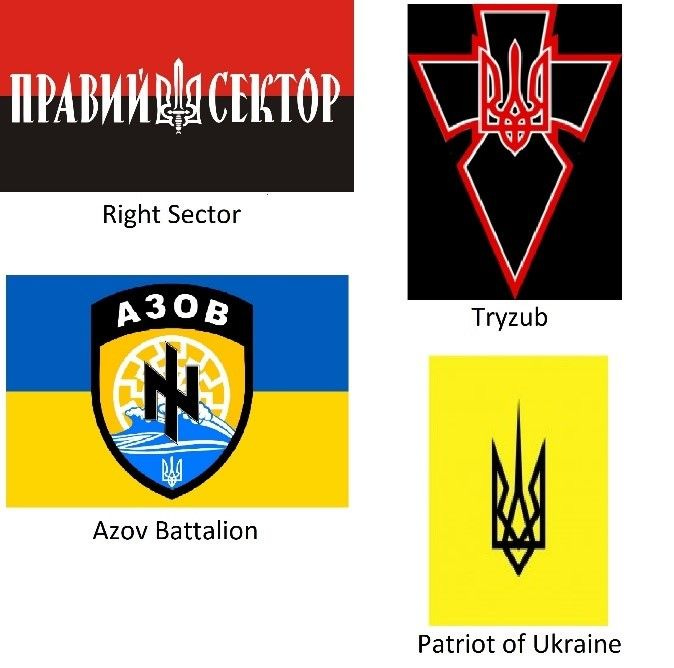
In 1998, the Nazi War Crimes and Japanese Imperial Government Records Interagency Working Group (IWG), at the behest of Congress, launched what became the largest congressionally mandated, single-subject declassification effort in history. As a result, more than 8.5 million pages of records have been opened to the public under the Nazi War Crimes Disclosure Act (P.L. 105-246) and the Japanese Imperial Government Disclosure Act (P.L. 106-567). These records include operational files of the Office of Strategic Services (OSS), the CIA, the FBI and Army intelligence. IWG issued three reports to Congress between 1999 and 2007.
A research group was put together to compile and organise key elements of this massive newly declassified database, the result was the publication of “U.S. Intelligence and The Nazis” in 2005, and “Hitler’s Shadow Nazi War Criminals, U. S. Intelligence, and the Cold War” in 2011, both published by the National Archives, and which will be used as a key reference for the rest of this paper.
Richard Breitman writes in “U.S. Intelligence and The Nazis” (1):
“What must be the earliest history (or mini-history) of the extermination of the Jews in Lvov [Lviv] was prepared on June 5, 1945. The ten-page document pointed out that, as soon as German troops took Lvov, Ukrainians in the city denounced Jews who had cooperated with Soviet authorities during the period of Soviet occupation, 1939-1941. Those Jews were arrested, gathered near the municipal building, and beaten by the Germans and local inhabitants. Later, local inhabitants, especially from the villages nearby, ravaged the Jewish quarter and beat Jews who stood in the way of their robbery. Starting on July 1, a pogrom was organized; German police, soldiers, and local Ukrainians all took part. Many of those arrested were tortured and killed… More than twelve thousand Jews were killed in the first weeks of the German occupation of Lvov.” [emphasis added]
Norman J.W. Goda writes in “U.S. Intelligence and The Nazis” (2):
“In its work to destabilize the Polish state, the OUN’s ties with Germany extended back to 1921. These ties intensified under the Nazi regime as war with Poland drew near. Galicia was allotted to the Soviets under the August 1939 Nazi-Soviet Non-Aggression Pact, and the Germans welcomed anti-Polish Ukrainian activists into the German-occupied General Government. In 1940 and 1941, in preparation for what would become the eastern campaign, the Germans began to recruit Ukrainians, particularly from Bandera’s wing, as saboteurs, interpreters, and police, and trained them at a camp at Zakopane near Cracow [Kraków]. In the spring of 1941, the Wehrmacht also developed two Ukrainian battalions with the approval of the Banderists, one code named ‘Nightingale’ (Nachtigall) and the other code named ‘Roland’.”
What showcases the youth, and unfortunately ignorance, of the OUN-B, is that the “blood and soil” slogan originating with the Nazis, to which they chose for their own OUN-B flag, was also tied to the belief that the German people were to expand into Eastern Europe, conquering and enslaving the native Slavic and Baltic population via Generalplan Ost. Thus, these Ukrainian nationalists were never considered worthy of sharing in this vision of Nazi Germany but had been regarded as the ultimate slaves for the new German empire from the very beginning.
The OUN-B would learn this lesson the hard way. Eight days after Germany’s invasion of the USSR, on June 30th, 1941, OUN-B proclaimed the establishment of the Ukrainian State in the name of Bandera in Lviv and pledged loyalty to Hitler. In response, the OUN-B leaders and associates were arrested and imprisoned or killed outright by the Gestapo (approx. 1500 persons). The Germans had no intention of even allowing a semi-independent Ukraine to form. Stefan Bandera and his closest deputy Jaroslav Stetsko were initially kept under house arrest and then sent to Sachsenhausen concentration camp (a comparatively comfortable confinement to the other concentration camps).
Mykola Lebed was able to slip through the German police net and became the de facto leader of the OUN-B leadership, also known as the Banderists.
On July 16th, 1941, the Germans absorbed Galicia into the General Government. In October 1941, the German Security Police issued a wanted poster with Lebed’s photograph.
The Germans transferred administrative and senior auxiliary police positions in western Ukraine to Melnyk’s group, OUN-M. (3) German security police formations were ordered to arrest and kill Bandera loyalists in western Ukraine for fear that they would rise against German rule, though this order was eventually revoked.
The following year Lebed would become the leader of the underground terror wing, the Ukrainian Insurgent Army (UPA), which continued in function until 1956.
Image to the left: Stefan Bandera. Image to the right: Mykola Lebed
Eastern Ukrainians later claimed that Mykola Lebed as leader of the OUN-B, took over the UPA by assassinating the original Ukrainian leaders. (4)
The OUN counted among its enemies those that had denied Ukrainian independence (including Poles and Soviets), those in the Ukraine who had failed to assimilate (Jews) and at times when it suited them the Germans. They also regarded the Jews as the primary support and “spreaders” of Bolshevism.
Breitman and Goda write (5):
“When the war turned against the Germans in early 1943, leaders of Bandera’s group believed that the Soviets and Germans would exhaust each other, leaving an independent Ukraine as in 1918. Lebed proposed in April to ‘cleanse the entire revolutionary territory of the Polish population,’ so that a resurgent Polish state would not claim the region as in 1918. Ukrainians serving as auxiliary policemen for the Germans now joined the Ukrainian Insurgent Army (UPA)… On a single day, July 11th, 1943, the UPA attacked some 80 localities killing… 10,000 Poles…The Banderists and UPA also resumed cooperation with the Germans.” [emphasis added]
This was all done under the command of Mykola Lebed.
By 1943, aware that their situation was becoming increasingly insecure, the OUN tried to re-centralise their forces. However, infighting occurred between the OUN-B against the OUN-M and the UPA unit of Taras Bulba-Borovets (of the exiled Ukrainian People’s Republic) who in a letter accused the OUN-B of among other things: banditry, of wanting to establish a one-party state, and of fighting not for the people but in order to rule the people.
In their struggle for dominance in Volhynia, the Banderists (OUN-B) would kill tens of thousands of Ukrainians for any link to the networks of Bulba-Borovets or Melnyk (OUN-M). (6)
By September 1944 German Army officers in northern Ukraine told their superiors in Foreign Armies East that the UPA was a “natural ally of Germany” and “a valuable aid for the German High Command,” and Himmler himself authorized intensified contacts with UPA. (7)
Norman J.W. Goda writes (8):
“Though UPA propaganda emphasized that organization’s independence from the Germans, the UPA also ordered some young Ukrainians to volunteer for the Ukrainian SS Division “Galicia,” and the rest to fight by guerilla methods. Lebed still hoped for recognition from the Germans.” [emphasis added]
The SS Galicia Division existed from April 1943 to April 15th, 1945. Germany surrendered on May 7th, 1945.
In September 1944, the Germans released Bandera and Stetsko from Sachsenhausen.
The Ukrainian Nationalist Movement Post-WWII: Bought and Paid for by the CIA and served à la Lebed
“[Lebed] is a well known sadist and collaborator of the Germans”
(9)
– 1947 Report by The U.S. Army’s Counterintelligence Corps (CIC)
In July 1944 Mykola Lebed helped form the Supreme Ukrainian Liberation Council (UHVR), which would claim to represent the Ukrainian nation and served as an underground government in the Carpathian mountains, in opposition to the Ukrainian SSR. The dominant political party in UHVR was the Bandera group and the UPA, which from that point on served as the army of UHVR and continued to fight the Soviets until 1956.
A feud erupted in 1947 between Bandera and Stetsko on one side for an independent Ukraine under a single party led by Bandera himself vs. Lebed and Father Ivan Hrynioch (chief of the UHVR Political Section) who were against Bandera being head of state.
At an August 1948 Congress of the OUN Foreign Section, Bandera (who still controlled 80% of the UHVR) expelled the Hrynioch-Lebed group. He claimed exclusive authority on the Ukrainian national movement and continued terror tactics against anti-Banderist Ukrainian leaders in Western Europe and maneuvered for control of Ukrainian émigré organizations. (10) However, Lebed who had become close with the Americans at that point was recognized, along with Hrynioch as the official UHVR representation abroad.
With the war lost, Lebed adopted a strategy similar to that of Reinhard Gehlen – he contacted the Allies after escaping Rome in 1945 with a trove of names and contacts of anti-Soviets located in western Ukraine and in displaced persons camps in Germany. This made him attractive to the U.S. Army’s Counterintelligence Corps (CIC) despite their above admission in their 1947 report.
NATO’s COUP IN UKRAINE: THE GENESIS – 2. Obama, Soros, MI6 & Kyiv Security Forum
In late 1947, Lebed who it was feared would be assassinated by the Soviets in Rome, was smuggled along with his family by the CIC to Munich, Germany in December 1947 for his safety.
Norman J.W. Goda writes (11):
“By late 1947, Lebed had thoroughly sanitized his prewar and wartime activities for American consumption. In his own rendition, he had been a victim of the Poles, the Soviets, and the Germans – he would carry the Gestapo “wanted” poster for the rest of his life to prove his anti-Nazi credentials…He also published a 126-page booklet on the UPA, which chronicled the heroic struggle of Ukrainians against both Nazis and Bolsheviks, while calling for an independent, greater Ukraine that would represent the human ideals of free speech and free faith. The UPA, according to the booklet, never collaborated with the Nazis, nor is there any mention of the slaughter of Galician Jews or Poles in the book. The CIC considered the booklet to be the ‘complete background on the subject.’ The CIC overlooked the fact that under its own watch an OUN Congress held in September 1947 had split, thanks to Lebed’s criticism of the creeping democratization of the OUN. This was overlooked by the CIA which began using Lebed extensively in 1948…In June 1949…the CIA smuggled him [Lebed] into the United States with his wife and daughter under the legal cover of the Displaced Persons Act.” [emphasis added]
The Immigration and Naturalization Service (INS) began investigating Lebed and in March 1950 reported to Washington that numerous Ukrainian informants spoke of Lebed’s leading role among the “Bandera terrorists” and that during the war the Bandersists were trained and armed by the Gestapo and responsible for “wholesale murders of Ukrainians, Poles and Jewish [sic]…In all these actions, Lebed was one of the most important leaders.” (12)
In 1951, top INS officials informed the CIA of its findings along with the comment that Lebed would likely face deportation. The CIA responded on October 3, 1951, that all of the charges were false and that the Gestapo “wanted” poster of Lebed proved that he “fought with equal zeal against the Nazis and Bolsheviks.” (13)
INS officials as a result suspended the investigation on Lebed.
In February 1952, the CIA pressed the INS to grant Lebed re-entry papers so that he could leave and re-enter the United States at will. Argyle Mackey, Commissioner of the INS, refused to grant this.
On May 5, 1952, Allen Dulles, then Assistant Director of the CIA wrote a letter to Mackey stating (14):
“In connection with future Agency operations of the first importance, it is urgently necessary that subject [Lebed] be able to travel in Western Europe. Before [he] undertakes such travel, however, this Agency must…assure his re-entry into the United States without investigation or incident which would attract undue attentions to his activities.”
Above image is the original document of the Dulles letter to Mackey on behalf of Mykola Lebed.
What was in West Germany? General Reinhard Gehlen, former chief of the Wehrmacht Foreign Armies East military intelligence, who had been conveniently allowed to re-enter West Germany to establish his Gehlen Organisation which would later form the Bundesnachrichtendienst (Federal Intelligence Service of West Germany) in 1956 .
Dulles also wanted Lebed’s legal status changed to that of “permanent resident,” under Section 8 of the CIA Act of 1949. The INS never investigated further after Dulles’ letter and Lebed became a naturalized U.S. citizen in March 1957.
Bandera would also be stationed in West Germany with his family after the war, where he remained the leader of the OUN-B and worked with several anti-communist organizations as well as with British Intelligence. (15) At this point Bandera had become too much of a liability and there were multiple attempts, by both the Americans and British starting in 1953, to get Bandera to step down and for Lebed to represent “the entire Ukrainian liberation movement in the homeland.” Bandera refused and went rogue.
It is said that Bandera was assassinated in 1959 by a KGB agent in Munich, however, one cannot help but note that it was excellent timing and extremely beneficial for the Americans that Bandera was taken out when he was, considering what they had planned for Ukraine’s future…
Among the declassified records are that of Hoover’s FBI, who had a small trove of captured German General Staff documents from 1943 and 1944, which revealed German appreciation of the UPA’s work while mentioning Lebed by name. (16) It appears this was never shared with any agency or institution, other than the CIA, despite requests from the INS during their investigation of Lebed.
UKRAINEGATE, CIA-DEEP STATE’S PLOT AGAINST TRUMP with two whistleblowers and Italian ties
Interestingly, Goda writes (17):
“The full extent of his [Lebed’s] activities as ‘Foreign Minister’ [of the UHVR] may never become known, but FBI surveillance of him gives some idea. Partly, Lebed lectured at prestigious universities such as Yale on such topics as biological warfare used by the Soviet government in the Ukraine.” [emphasis added]
The following is an indication as to what Dulles may have been referring to as the urgent need for Lebed’s re-entry into Western Europe.
Breitman and Goda write (18):
“By 1947 some 250,000 Ukrainians were living…in Germany, Austria, and Italy, many of them OUN activists or sympathizers. After 1947 UPA fighters began crossing into the U.S. zone, having reached the border on foot through Czechoslovakia.”
However, Lebed was not only urgently needed in Europe, but also within the United States. Once in the United States, Lebed was selected as the CIA’s chief contact/advisor for AERODYNAMIC.
Breitman and Goda write (19):
“AERODYNAMIC’s first phase involved infiltration into Ukraine and then exfiltration of CIA-trained Ukrainian agents. By January 1950 the CIA’s arm for the collection of secret intelligence (Office of Special Operations, OSO) and its arm for covert operations (Office of Policy Coordination, OPC) participated [author’s note: the Allen Dulles rogue faction of the CIA]…Washington was especially pleased with the high level of UPA training in the Ukraine and its potential for further guerilla actions, and with ‘the extraordinary news that…active resistance to the Soviet regime was spreading steadily eastward, out of the former Polish, Greek Catholic provinces… [However] By 1954 Lebed’s group lost all contact with UHVR. By that time the Soviets subdued both the UHVR and UPA, and the CIA ended the aggressive phase of AERODYNAMIC.
Beginning in 1953 AERODYNAMIC began to operate through a Ukrainian study group under Lebed’s leadership in New York under CIA auspices, which collected Ukrainian literature and history and produced Ukrainian nationalist newspapers, bulletins, radio programming, and books for distribution in the Ukraine. In 1956 this group was formally incorporated as the non-profit Prolog Research and Publishing Association. It allowed the CIA to funnel funds as ostensible private donations without taxable footprints. To avoid nosey New York State authorities, the CIA turned Prolog into a for-profit enterprise called Prolog Research Corporation, which ostensibly received private contracts. Under Hrinioch [Hrynioch], Prolog maintained a Munich office named the Ukrainische Geseelschaft fur Auslandsstudein, EV. Most publications were created here.
Prolog recruited and paid Ukrainian émigré writers who were generally unaware that they worked in a CIA-controlled operation. Only the six top members of the ZP/UHVR were witting agents. Beginning in 1955, leaflets were dropped over Ukraine by air[,] and radio broadcasts titled Nova Ukraina were aired in Athens for Ukrainian consumption. These activities gave way to systematic mailing campaigns to Ukraine through Ukrainian contacts in Poland and émigré contacts in Argentina, Australia, Canada, Spain, Sweden, and elsewhere. The newspaper Suchasna Ukrainia (Ukraine Today), information bulletins, a Ukrainian language journal for intellectuals called Suchasnist (The Present), and other publications were sent to libraries, cultural institutions, administrative offices and private individuals in Ukraine. These activities encouraged Ukrainian nationalism…” [emphasis added]
CIA’s Ground Branch is Training Ukrainian Paramilitaries against Russia.
The CIA bought and paid for a brand of Ukrainian Nationalism à la Lebed. One of the most horrifying butchers of OUN/UPA was given reign to shape the hearts and minds of the Ukrainian people around their nationalist identity, an identity as defined by the OUN. It is also shaped historical and cultural interpretation such as to further romanticise the concept of the great Ukrainian race of Volodomyr the Great, encouraging a further sense of superiority and further divide between themselves and Belarussians and Russians.
One CIA analyst judged that, “some form of nationalist feeling continues to exist [in the Ukraine] and…there is an obligation to support it as a cold war weapon.” (20)
Breitman and Goda continue:
“…Prolog [also] influenced [the next] Ukrainian generation…Prolog had become in the words of one senior CIA official, the sole ‘vehicle for CIA’s operations directed at the Ukrainian Soviet Socialist Republic and [its] forty million Ukrainian citizens.’
Lebed overtly distanced himself and the Ukrainian nationalist movement from the overt anti-Semitism of his Banderist days…More to protect the name of Ukrainian nationalism, he publicly condemned the ‘provocative libel’ and ‘slanderous statements’ against Jews, adding in a particularly forgetful note that, ‘the Ukrainian people…are opposed to all and any preaching of hatred for other people.’…Former Banderists…now attacked the Soviets for anti-Semitism rather than with it.
Lebed retired in 1975 but remained an adviser and consultant to Prolog and the ZP/UHVR…In the 1980s AERODYNAMIC’s name was changed to QRDYNAMIC and in the 1980s PDDYNAMIC and then QRPLUMB. In 1977 President Carter’s National Security Advisor Zbigniew Brzezinski helped to expand the program owing to what he called its ‘impressive dividends’ and the ‘impact on specific audiences in the target area.’ In the 1980s Prolog expanded its operation to reach other Soviet nationalities, and in a supreme irony, these included dissident Soviet Jews. With the USSR teetering on the brink of collapse in 1990, QRPLUMB was terminated with a final payout of $1.75 million. Prolog would continue its activities, but it was on its own financially.
In June 1985 the General Accounting Office mentioned Lebed’s name in a public report on Nazis and collaborators who settled in the United States with help from U.S. intelligence agencies. The Office of Special Investigations (OSI) in the Department of Justice began investigating Lebed that year. The CIA worried that public scrutiny of Lebed would compromise QRPLUMB and that failure to protect Lebed would trigger outrage in the Ukrainian émigré community. It thus shielded Lebed by denying any connection between Lebed and the Nazis and by arguing that he was a Ukrainian freedom fighter. The truth, of course, was more complicated. As late as 1991 the CIA tried to dissuade OSI from approaching the German, Polish, and Soviet governments for war-related records related to the OUN. OSI eventually gave up the case, unable to procure definitive documents on Lebed.” [emphasis added]
Mykola Lebed died in 1998 under the protection of the CIA in New Jersey at the age of 89. His papers are located at the Ukrainian Research Institute at Harvard University.
And there you have it, the true story of the Ukrainian Nationalist Movement in its form today, bought and paid for by the CIA. Thus, it is no coincidence that the OUN ideology is inextricable from the western Ukrainian nationalist identity today, nor that several neo-Nazi groups have formed since 1991 (since Ukraine’s independence from the USSR) who all view the OUN and Stepan Bandera as the Father of their movement.
by Cynthia Chung
Originally published on by Matthew Ehret Substack
Links to Gospa News articles have been added by our Editorial Staff
Cynthia Chung is the President of the Rising Tide Foundation and a writer at Strategic Culture Foundation, consider supporting her work by making a donation and subscribing to her substack page. This article was originally published on by Strategic Culture Foundation.
The Fabian Society, Eugenics and the Historic Forces Behind Today’s Systemic Breakdown
https://www.gospanews.net/en/2022/02/28/eus-criminal-energy-politics-freezing-of-nord-stream-2-a-mass-sacrifice-to-the-gods/

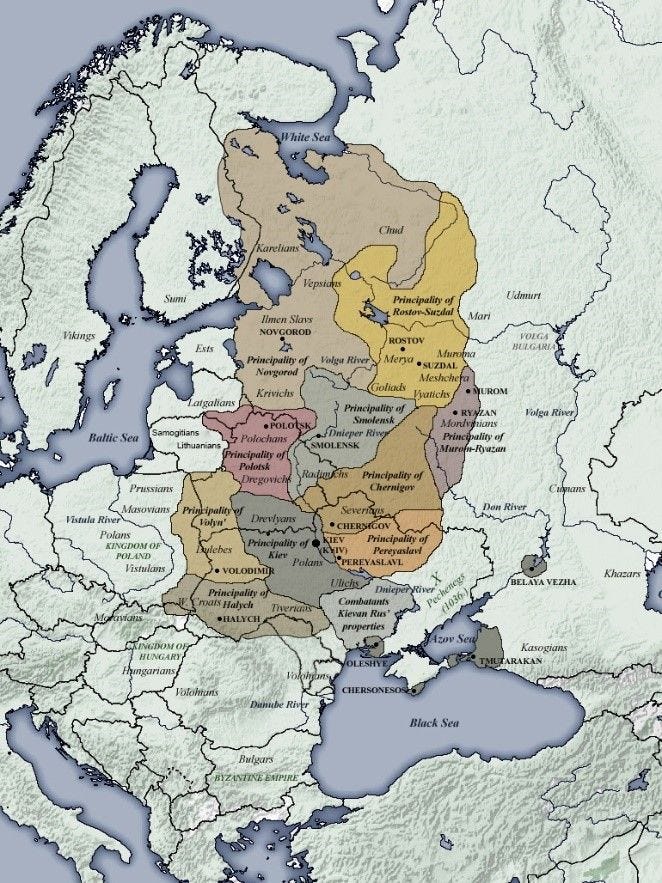

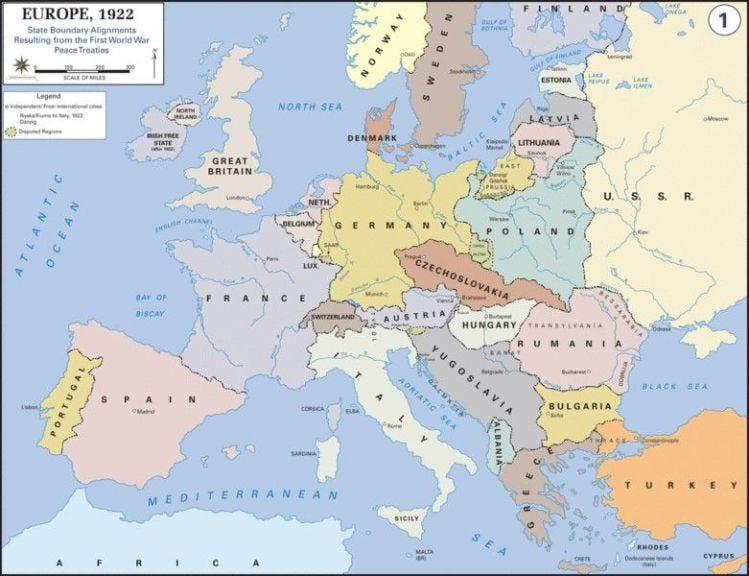

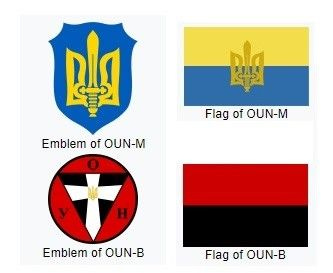
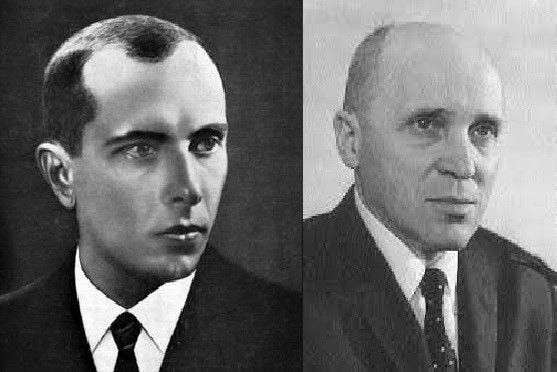
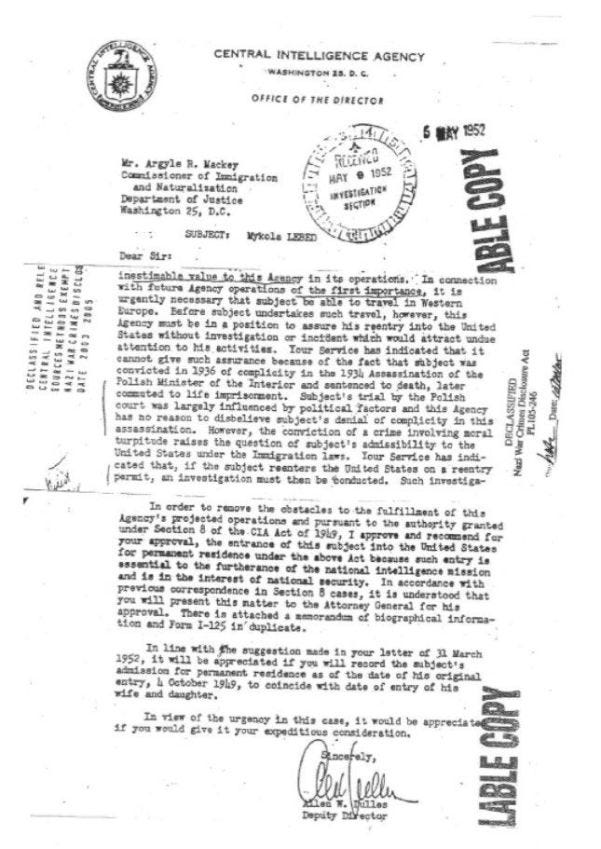
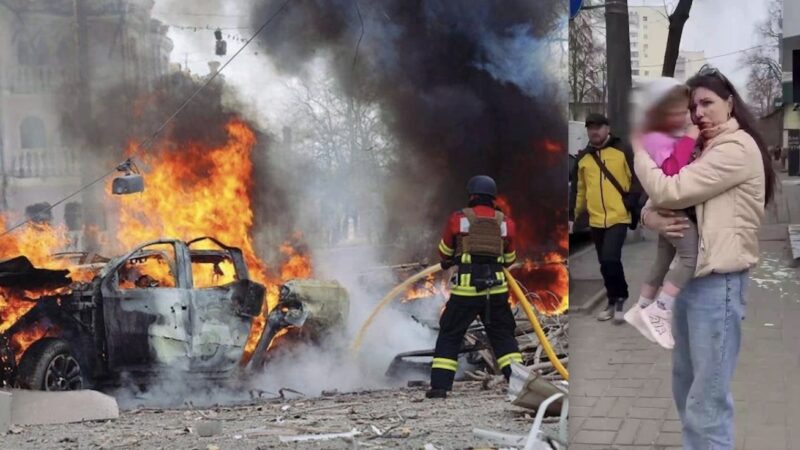
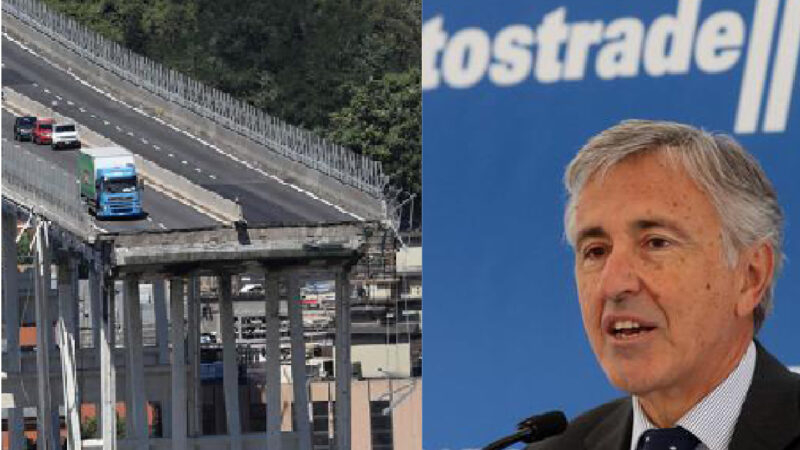
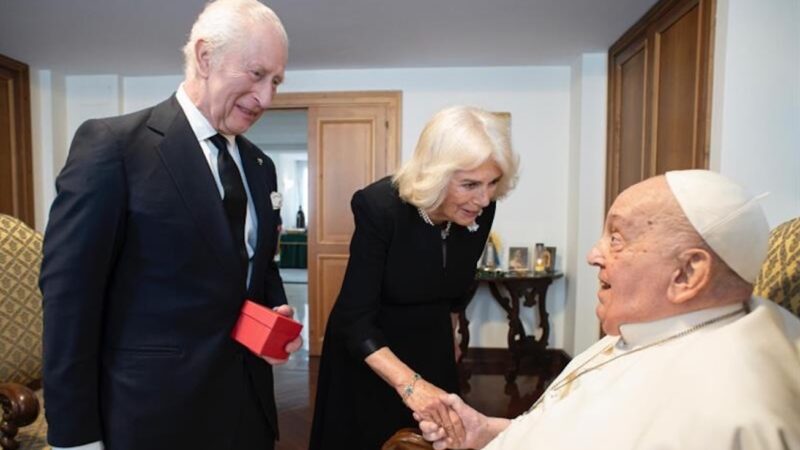
8 pensieri su “Ukrainian Nationalist Movement Post-WWII Bought and Paid for by the CIA. From SS Galician to Azov Neo-Nazis”